You’ve probably noticed your cat rolling around on concrete playfully for minutes or even hours on end. It’s an adorable behavior, to be sure.
But why are cats obsessed with rolling around on such hard, gritty surfaces?
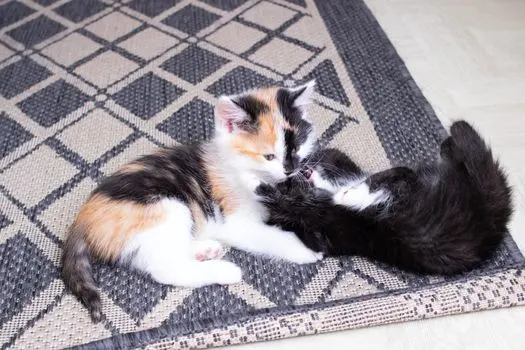 The main reasons why cats roll around on concrete are to mark their territory via scent glands, regulate their body temperature, scratch their backs, or signal submission to other cats or humans.
The main reasons why cats roll around on concrete are to mark their territory via scent glands, regulate their body temperature, scratch their backs, or signal submission to other cats or humans.
Additionally, domestic cats’ natural instincts cause them to seek out flat surfaces like their big cat ancestors.
To learn more about this odd feline behavior, keep reading. Generally, why your cat rolls around on concrete is normal and not a cause for concern.
Territory Marking via Scent Glands
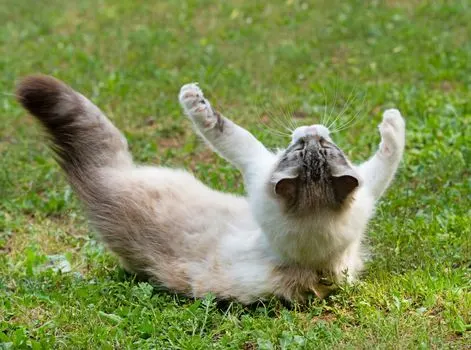 The most common and well-understood reason cats roll around on concrete is to mark their territory. Territory marking is done by releasing pheromones from scent glands.
The most common and well-understood reason cats roll around on concrete is to mark their territory. Territory marking is done by releasing pheromones from scent glands.
These scent glands are located all over your cat’s body. They can spread their scent by rolling on a flat yet textured surface like concrete.
The pheromones released by a cat’s scent glands signal other cats that they’ve marked their territory.
The smell is one of your cat’s most powerful senses. Cats constantly use their sense of smell to convey and interpret information to and from each other.
Essentially, territory marking via scent glands is your cat’s way of politely informing other cats that they’ve claimed their turf.
Domestic cats have retained this instinctual behavior from their ancestors. Big cats like lions and tigers spread their pheromones by rolling around on hard surfaces.
Where Are A Cat’s Scent Glands?
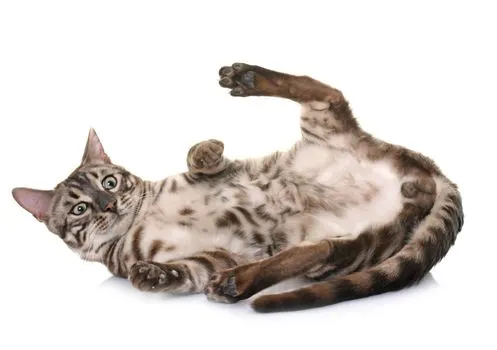 There are nine special scent glands located throughout your cat’s body. These include:
There are nine special scent glands located throughout your cat’s body. These include:
- Cheek glands (near the whiskers)
- Perioral glands (around the nose and mouth)
- Submandibular gland (under the chin)
- Interdigital glands (around and between the paw pads)
- Caudal glands (up and down the length of the tail)
- Supracaudal glands (at the base of the tail)
- Pinna glands (across the forehead)
- Temporal glands (just above the eyes)
- Anal glands (surrounding the rectum)
Cats spread their scent in many ways, including rubbing their face against objects or kneading their paws. However, the best way to accomplish this is by rolling on their backs.
When rolling on their backs, cats primarily use their caudal, supra caudal, and anal glands to mark their territory.
You will likely also notice your cat rubbing their face against the concrete too. This is to use their many scent glands distributed around their eyes, cheeks, and forehead.
Scratching A Hard-To-Reach Itch
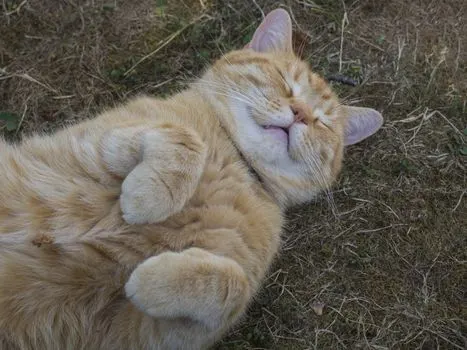 Another common reason why cats love rolling around on surfaces like concrete and asphalt is to scratch hard-to-reach spots.
Another common reason why cats love rolling around on surfaces like concrete and asphalt is to scratch hard-to-reach spots.
Since cats can’t simply reach around and scratch their backs with their paws, they will often get a bit creative. Many will rub themselves against walls or the ground to satisfy the urge.
Concrete is a perfect surface for cats to scratch themselves on. It’s solid and flat yet has a rough texture to rub their backs against as vigorously as needed.
Plus, while concrete is rough, it isn’t quite so rough to cause injuries.
Additionally, concrete is abundant in most neighborhoods. Whether the cat lives in a rural, urban, or suburban area, there’s bound to be concrete nearby.
Temperature Regulation
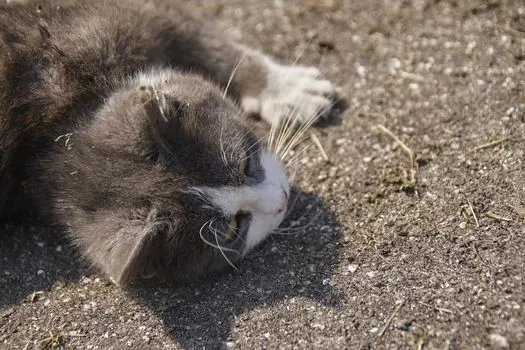 There are many ways cats can regulate their core body temperature. You might have guessed by now that one of them is rolling around on surfaces like concrete.
There are many ways cats can regulate their core body temperature. You might have guessed by now that one of them is rolling around on surfaces like concrete.
Depending on the weather outside, your cat will seek out concrete for different reasons. Generally, these reasons are to either cool off or warm up.
Cats are endothermic, meaning they can regulate and generate their body heat. However, they also get a bit of help from their surroundings, too.
As we mentioned briefly earlier, concrete is readily available to most cats. It comes in many colors, some attracting heat more than others.
Warming Up
Cats often seek out a patch of dark-colored concrete under direct sunlight if it’s cool outside. Darker patches of concrete attract plenty of heat.
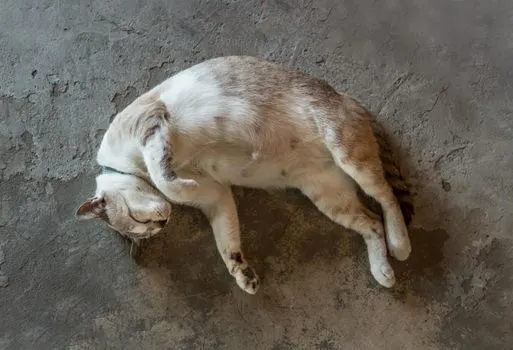 This makes the surface ideal for stretching and rolling around to absorb warmth.
This makes the surface ideal for stretching and rolling around to absorb warmth.
In turn, the extra external heat will raise their body temperature. Cats will sunbathe in these spots until they’re warm and comfortable again.
Cooling Down
Alternatively, if it’s hot outside, your cat might find an area of grey, white, or beige concrete in the shade. These cool patches don’t attract much heat.
As a result, they make the perfect spot to roll around on until the cat has cooled off.
Plus, the gritty, textured surface of the concrete feels good against the cat’s skin.
Either way, in this case, the behavior is expected. It’s merely a means of adjusting their body temperature and getting comfortable.
Showing Submission (To Other Cats or Humans)
Cats are expert communicators. They have many unique ways of showing submission or dominance over other cats. Sometimes, they communicate solely to signal their presence to other cats nearby.
One of the most common ways cats tend to show submissiveness is to roll onto their backs. This exposes their belly. They often display this behavior towards other cats, animals, or even humans.
Your cat’s belly is one of its most vulnerable, sensitive parts. It protects their vital organs and puts them in a prone position when exposed.
Rolling onto their back is a crucial way for them to communicate they are comfortable around you or another cat.
Additionally, it doubles as a way to signal to other cats that they don’t want to fight. Again, concrete is an abundant surface both outdoors and indoors.
Cats will seek it out to roll around on when showing submission. This is usually because it’s the most comfortable surface nearby.
Plus, as we touched on earlier, concrete doubles as an ideal surface to mark their territory in a non-confrontational way.
Is Submissive Behavior a Good Thing?
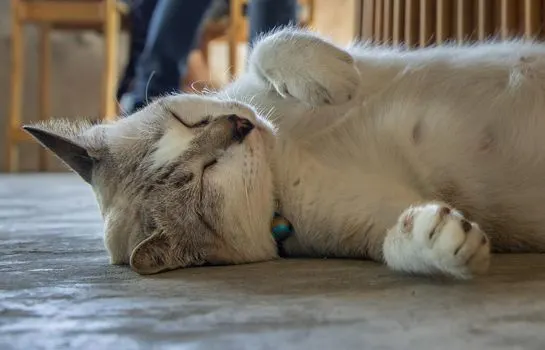 If your cat rolls onto their back around you, it’s a good sign that they enjoy your presence. Even better, it signals they are willing to be vulnerable around you.
If your cat rolls onto their back around you, it’s a good sign that they enjoy your presence. Even better, it signals they are willing to be vulnerable around you.
Alternatively, if they display this behavior around other cats, they take a submissive role. This usually avoids direct confrontation and signals that they want to get along.
Some cats will roll onto their back to make a playful, inoffensive first impression on nearby cats.
If you see a cat rolling onto its back, they’re taking a risk. By making themselves vulnerable, they hope to have a pleasant encounter with you or another cat.
Catnip Affecting Behavior
If you’ve given your cat catnip recently, you’ve probably noticed that their behavior changed significantly.
Generally, cats become more playful and relaxed when exposed to catnip. This is because catnip has an oil called nepetalactone in it that mimics feline sex hormones.
It is ubiquitous for cats exposed to catnip to roll around on concrete nearby. Naturally, the plant’s nepetalactone lowers their inhibitions and defenses significantly.
Nepetalactone also causes cats’ bodies to produce increased levels of pheromones from their scent glands.
Cats are more likely to seek out large, flat areas like concrete patches to roll around on. Concrete also doubles as a perfect surface to spread their pheromones.
Plus, the gritty texture of concrete feels especially good to them if they become itchy while under the influence of catnip’s intoxicating effects.
Cats Instinctually Prefer Flat Surfaces
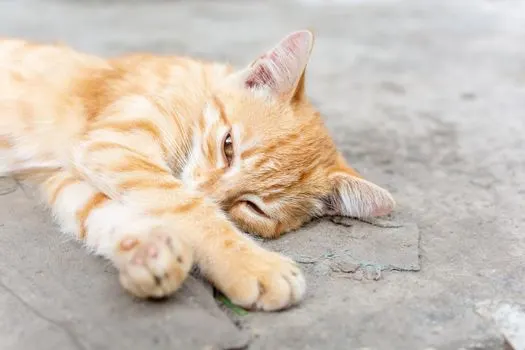 Finally, it’s worth mentioning that cats naturally enjoy lying on and rolling around on hard, flat, and slightly textured surfaces. This is thanks to their deeply ingrained instincts.
Finally, it’s worth mentioning that cats naturally enjoy lying on and rolling around on hard, flat, and slightly textured surfaces. This is thanks to their deeply ingrained instincts.
For centuries, your beloved feline’s big cat ancestors have primarily used flat surfaces to eat, sleep, and breed on. These surfaces include tree branches, packed dirt or clay patches, and more in the wild.
As a result, even domestic cats are still attracted to surfaces that mimic those their ancestors have used in the wild.
Even if a cardboard box or a concrete patch doesn’t look comfortable to you, your cat probably loves them.
Concrete is especially inviting for cats. It’s flat yet has a rough, gritty texture for them to lie down and roll around comfortably.
Plus, if they need to scratch an itch or mark their territory with their natural pheromones, concrete is perfect.
You might have noticed this firsthand if you’ve ever purchased a cozy, cushioned cat bed for your pet. You bring the bed home for them to lie on the hard, cold ground beside it instead.
Since the hard floor is more familiar, they will seek it out instead of the cat bed. You can thank those natural instincts for that behavior, too!
Related Questions
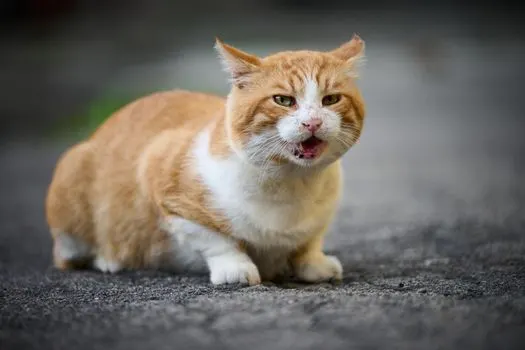 Why do cats roll onto their backs when they see you?
Why do cats roll onto their backs when they see you?
If your cat often rolls onto its back whenever it sees you, it means they’re happy to see you. Not only that, but it also means they feel safe around you.
Remember, your cat’s belly is very sensitive and vulnerable. Cats won’t display this behavior to just anyone.
Be glad if they roll onto their back when you approach them! Be sure not to frighten them or give them any reason not to trust you.
Why is my female cat rolling around on the floor after mating?
Rolling around on the floor usually shows submissiveness, playfulness, or both. It is common for female cats, particularly ones in heat, to roll around playfully more often than usual.
Additionally, your cat feels more inclined to spread its pheromones while in heat. As we covered earlier, rolling on their back is perfect for spreading those pheromones.
Is my cat begging for a treat when they roll on their back?
Not necessarily; they’re mostly just happy to see you. However, it is safe to treat your cat if they display this behavior.
It’s a great way to bond with your cat and reassure them you can interact safely. Just be sure the treats are safe for them to eat first!
Our team is composed of pet care professionals, veterinarians, and pet owners. To date, we’ve conducted thousands of hours of research to publish the most accurate pet information.
Most of the writers on our site are vets with 10+ years of clinical experience, ranging from small practice, to equine practice, academia, and surgery. Our goal is to help every pet owner get the information they seek about their dear companions.

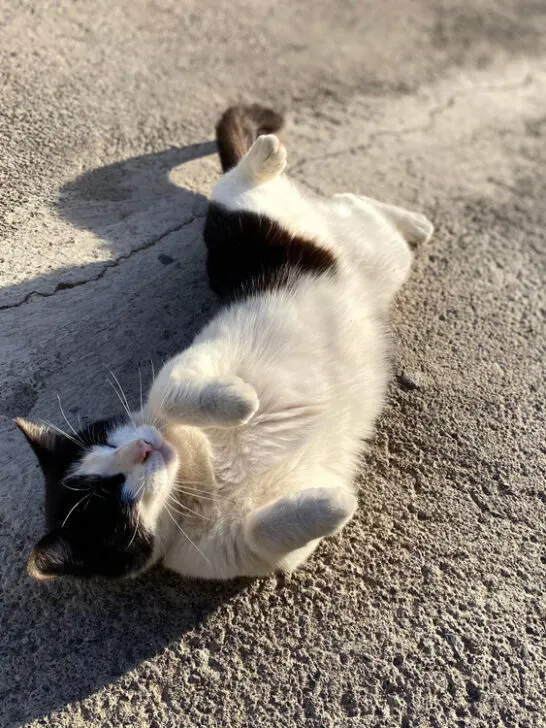

Leave a comment
You must be logged in to post a comment.